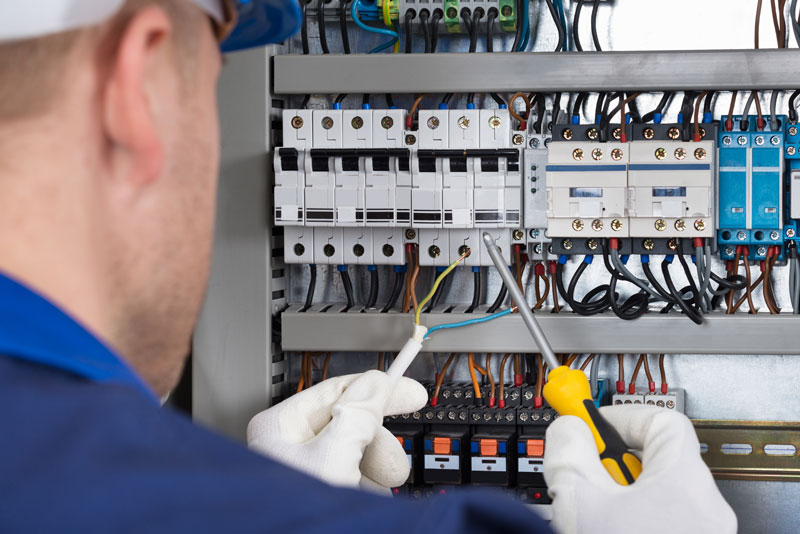Custom-made BRE Electrical Solutions for Efficient and Safe Installations
Custom-made BRE Electrical Solutions for Efficient and Safe Installations
Blog Article
The Ultimate Guide to Electric Installation: Tips and Strategies for a Safe and Effective Home Wiring System
In the realm of home upkeep, few facets are as important yet usually forgotten as the electric circuitry system. By checking out the nuances of electric security actions and energy-saving techniques, this extensive guide will certainly shed light on the details of home wiring, empowering people to take cost of their home's electrical infrastructure.
Comprehending Electric Precaution
To guarantee the security of both individuals and home, understanding and executing correct electric security steps is vital in any type of home circuitry project. Electricity is a powerful pressure that can be unsafe otherwise taken care of with care. Among the fundamental safety and security procedures is guaranteeing that all electrical work is done by qualified experts that adhere to regional building ordinance and policies. It is important to conduct an extensive evaluation of the electrical system before starting any circuitry job to determine possible risks or concerns that require to be dealt with.
In addition, using the proper devices and devices is important for preserving safety and security during electrical setups. Protected gloves, voltage testers, and protective glasses are some of the fundamental safety equipment that should be worn to stop electrical shocks or crashes. It is additionally important to de-energize circuits prior to working on them and to label all circuits and breakers clearly to avoid confusion.

Vital Devices for Home Wiring
Making sure the proper application of electric security actions in home wiring projects involves utilizing a details collection of necessary tools designed to facilitate the installment procedure effectively and safely. Some of the key tools needed for home wiring projects include a voltage tester for inspecting live wires, cord strippers for removing insulation from wires, a cord cutter for exactly reducing wires to length, a screwdriver set for safeguarding electrical parts, electric tape for insulation and protecting links, a cable ripper for removing cord sheathing, and a multimeter for determining voltage, existing, and resistance.
Step-by-Step Electric Setup Overview
Starting an electrical installment job requires precise preparation and adherence to security guidelines. Prior to starting any kind of work, guarantee you have a thorough plan describing the layout of the electric system, including the positioning of outlets, buttons, and fixtures. Consider the power demands of each tool to identify the proper cable scale and breaker dimensions.
The primary step in the installation process is to shut down the power supply to the location where you will be working. Use a voltage tester to verify that the circuits are de-energized before touching any wires. Next off, thoroughly get rid of existing components or electrical outlets and detach the wires.
When installing new electrical wiring, run cords through walls and ceilings, securing them in place with ideal installations. Comply with local building ordinance and manufacturer directions for appropriate cable installation and links. BRE Services. Ensure to label cords for very easy recognition and future maintenance

Troubleshooting Common Circuitry Issues
Having finished the setup process as described in the previous subtopic, fixing typical circuitry concerns is a vital ability for guaranteeing the safety and performance of your electric system. One common issue is a stumbled circuit breaker, typically triggered by overloaded circuits or a short circuit. To repair this, locate the breaker panel, recognize the tripped breaker by searching for the one not completely in the "on" setting, and reset it by flipping it fully to "off" and after that back to "on." Another common problem is a malfunctioning electrical outlet, characterized by no power or periodic power supply. Ensure the electrical outlet is not regulated by a button, then use a voltage tester to check for power. If there is no power, switch off the circuit, evaluate the wiring links for any loose or damaged cables, and replace the electrical outlet if needed. Continually flickering lights can suggest loose circuitry links or an overloaded circuit. To resolve this, check and tighten up all cord links in the affected components and buttons and rearrange the lots on the circuit to stabilize the electrical demand. Routinely inspecting and promptly addressing these typical BRE Electrical Solutions wiring issues will certainly maintain the safety and security and effectiveness of your home electric system.
Tips for Energy-Efficient Electrical Systems
For optimal energy performance in electric systems, implementing wise techniques and utilizing energy-saving modern technologies is extremely important. One vital tip for accomplishing an energy-efficient electric system is to upgrade to LED lighting. Correct insulation and sealing of home windows, doors, and electric outlets can additionally protect against power loss, ultimately decreasing the work on electrical systems.
Conclusion
To conclude, executing appropriate precaution, making use of important tools, complying with a step-by-step setup overview, troubleshooting common issues, and including energy-efficient ideas are essential for a safe and reliable home electrical wiring system. By adhering to these methods, property owners can ensure the long life and functionality of their electrical setups. It is essential to prioritize safety and security and efficiency when it comes to electric operate in order to stop possible hazards and to preserve a dependable electric system in the home.
Report this page